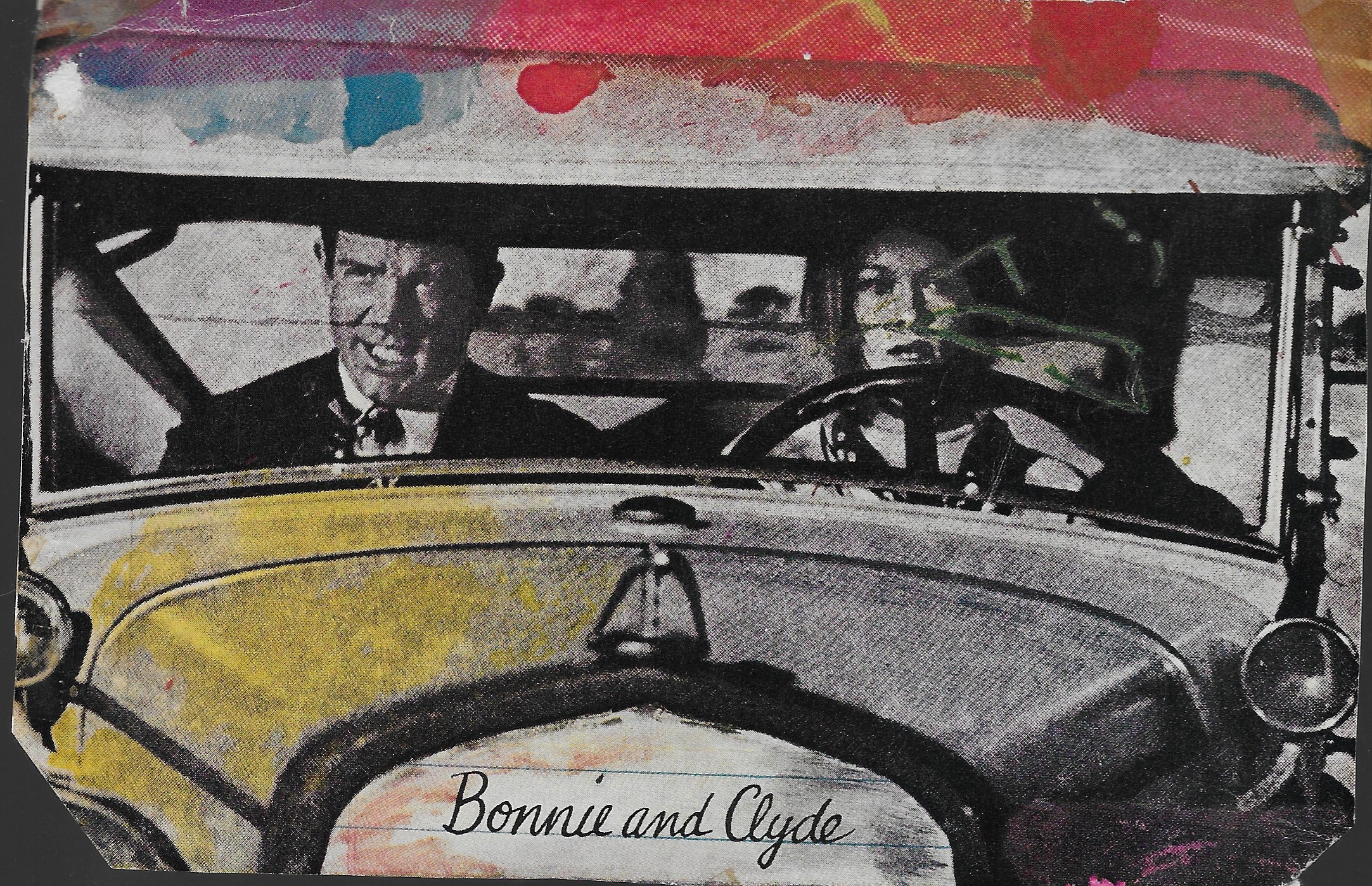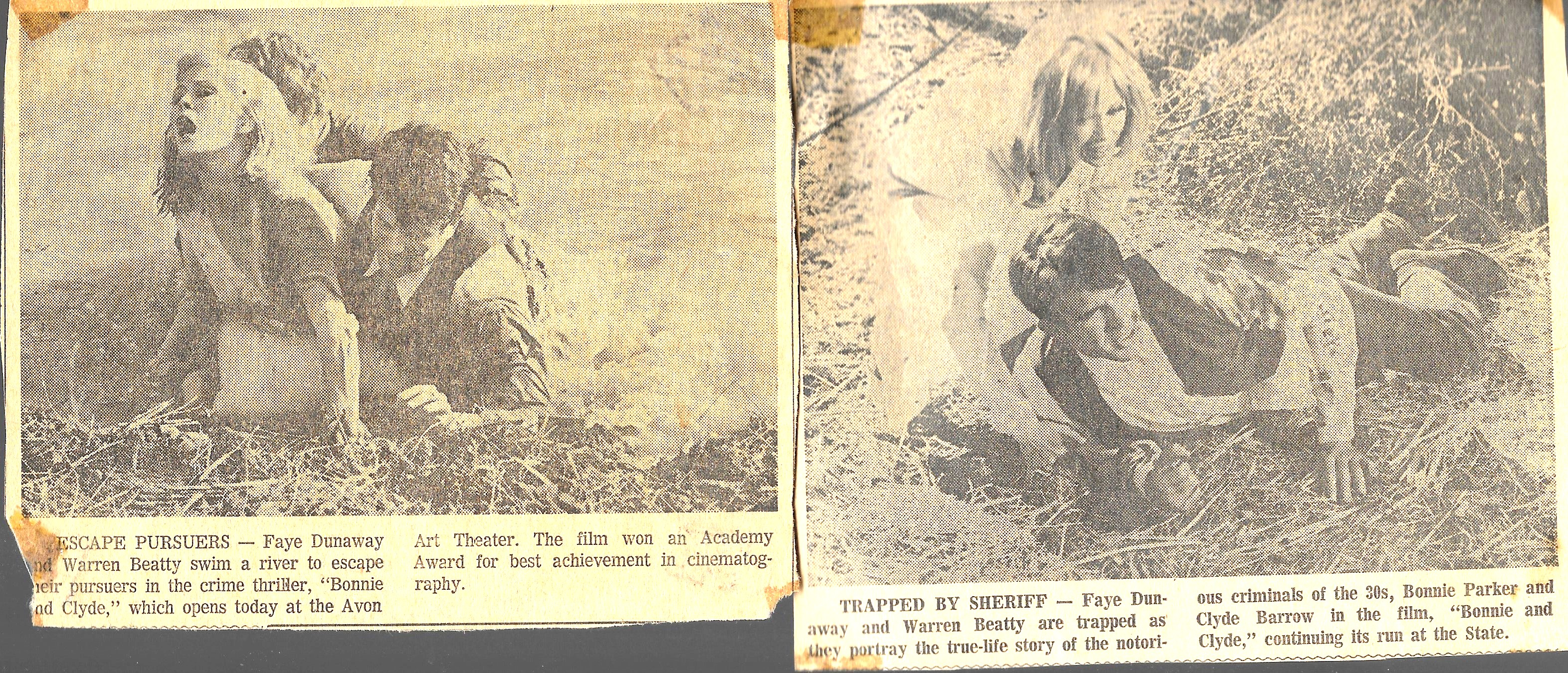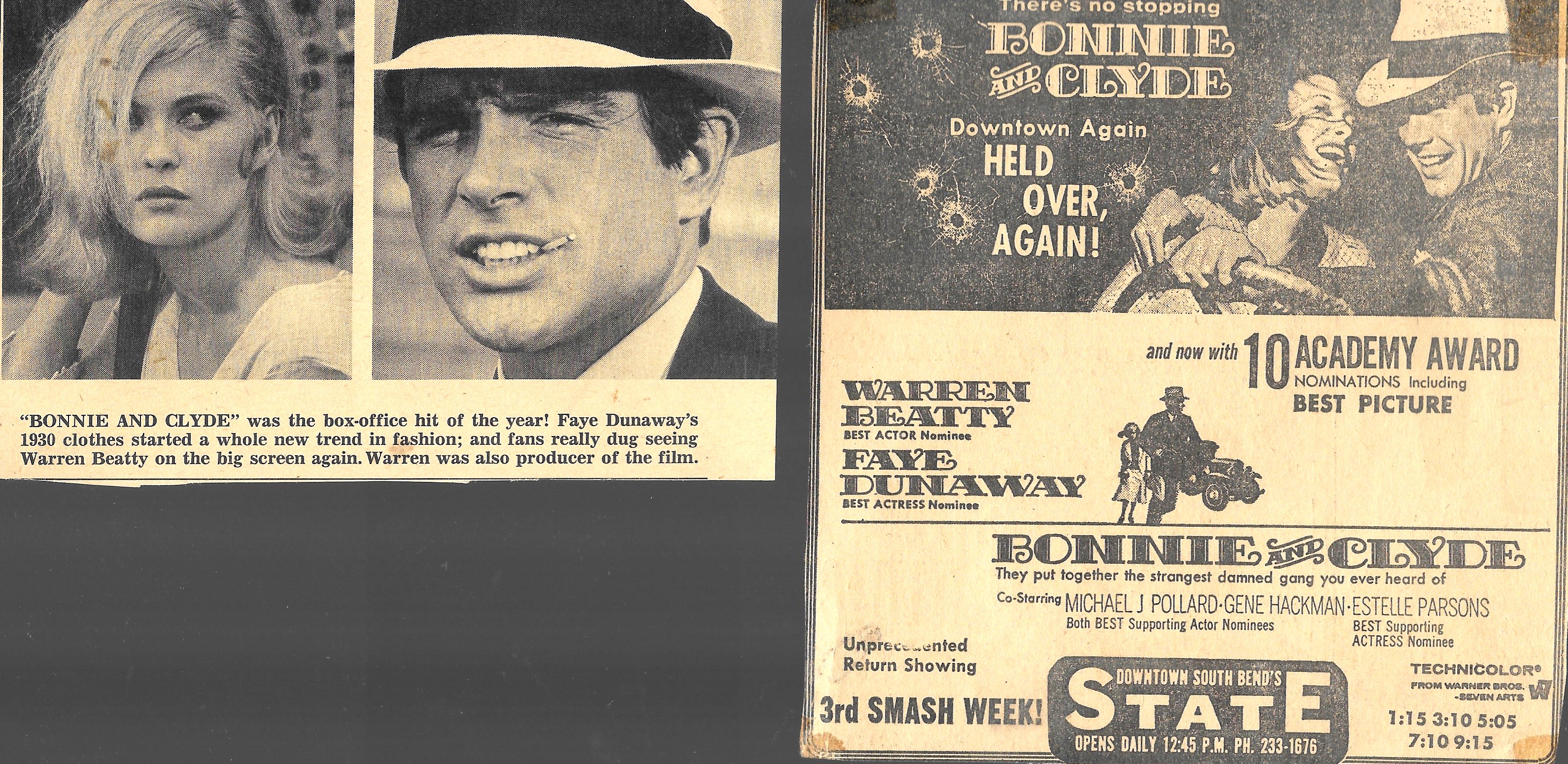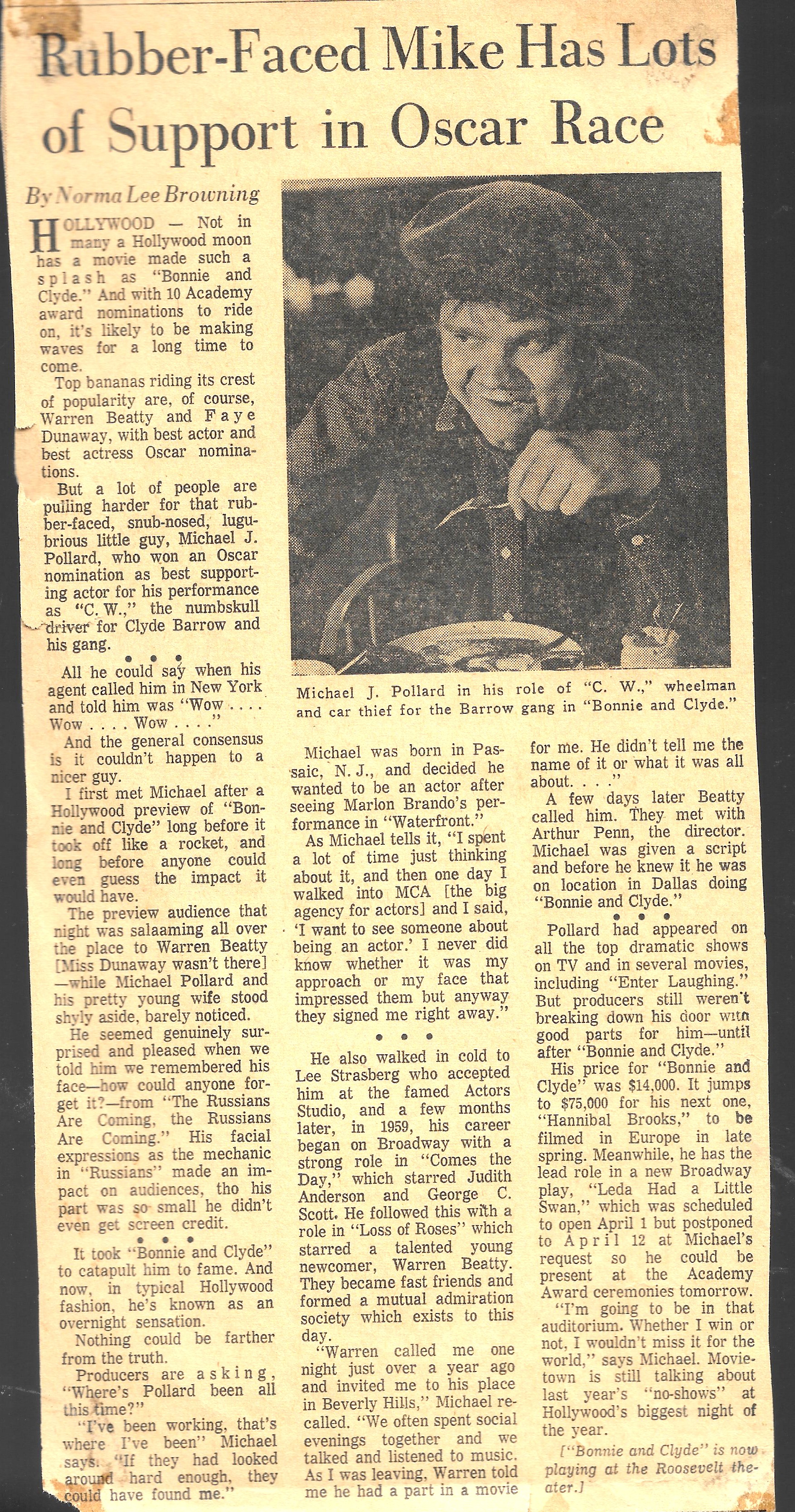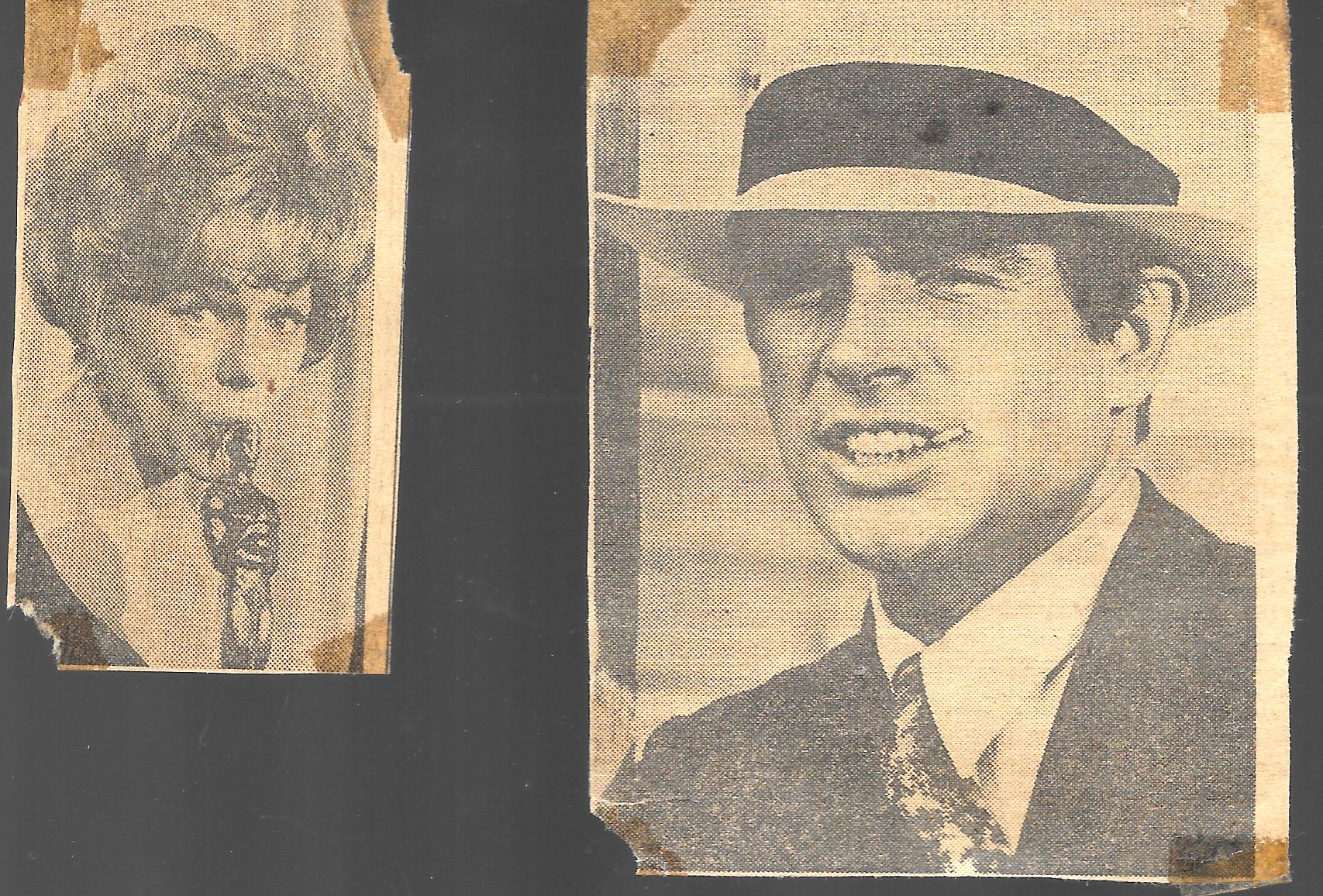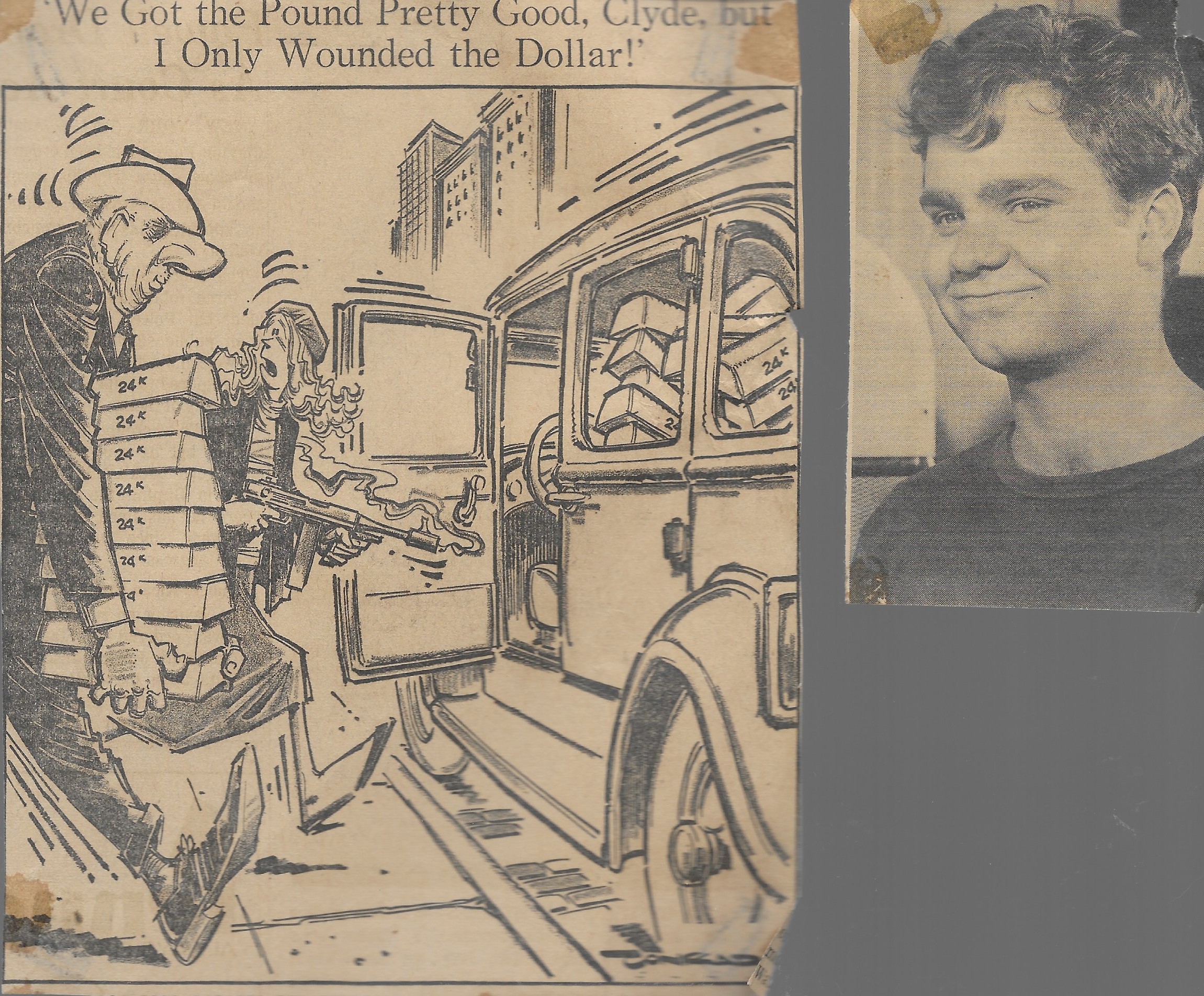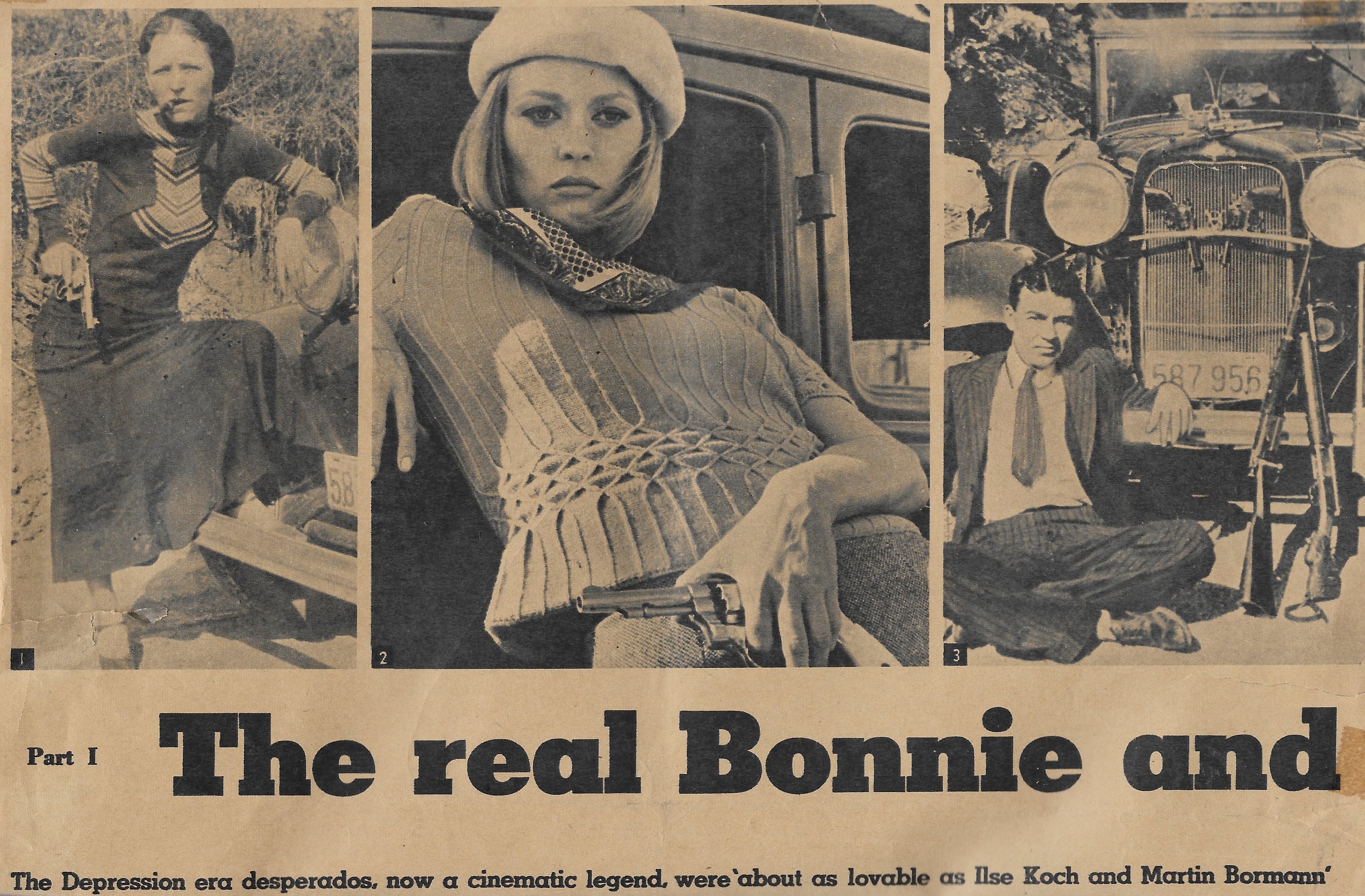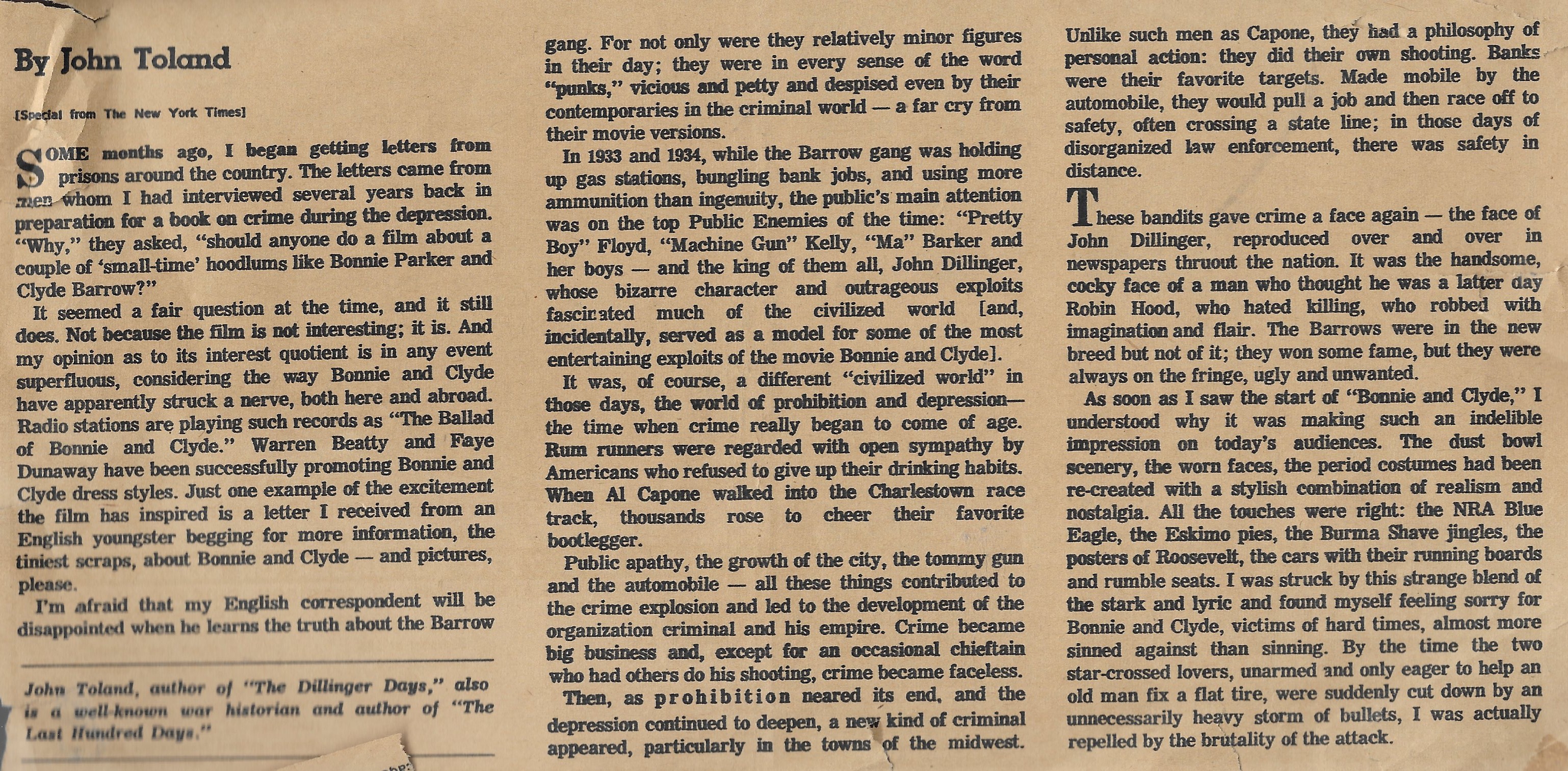Memorial to Victim of Bonnie and Clyde–Alma, Arkansas
This movie came out in 1967—and according to sources was around for a while before it caught on—-this was a crazy time…..in October 1967 when it came out: 8 years before this in a little known (then) country called Vietnam became the site were a Major and a Sgt. were killed in action on July 8, 1959— By 1967 there were hundreds killed every week and thousands every month—and that was just the US.
October found Westmoreland in charge in Nam and the monsoons making an impossible situation even more unbearable as well a the Air Force grounded except for a few helicopters. The infantry as usual took heavy losses and eventually the American Division withdrew toward the coast while killing 500- 1,000 of the enemies on the way.
By the 21st of October that year the first national domestic demonstration took place organized by the Mobilization Committee to End the War. There were 100,000 protesters that met up at the Lincoln Memorial—-but later that day (night) only 30,000 of them decided to move on to the Pentagon where they encountered soldiers and US Marshals set there to defend it. If you want to know more about the incident see Armies of the Night by Norman Mailer who was one of the hundreds arrested that night.
Bonnie and Clyde Dexfield Park Shootout: Dexter, Iowa
1967 was also the year that Martin Luther King led his first demonstrations and later made his first major public speech on his opposition to the war on moral grounds.
Given all this and the fact that all our news both printed and on TV was full of the growing protests and the body count which grew daily…..more and more the students and other young people were appalled by the numbers lost. Like the current virus I knew very few people that were actually that were lost from it—but I could still worry and of course have compassion for the dead and wounded and their families.
When the movie Bonnie & Clyde came out in 1967—it was with cool reviews and it like I said before took a while to hit its stride—with the older generation (like anyone 40 or so) have serious doubts about this film that they felt might prove dangerous—and the NY Times critic among others panning it and its excessive violence and senseless movements—but they were to find that their children were not influenced by their beliefs and were seriously
Bonnie and Clyde Shootout Souvenirs: Dexter, Iowa
But by 1968 it had gained popularity. I remember seeing it—-and Clyde announcing while he is target practicing at an empty farm house and a tenant farmer and his black hired end up joining him and using one of his guns to shoot the place up—which they are in the process of leaving as it’s been re-possessed by the bank….Clyde introduces himself and Bonnie and then adds “We rob banks.” And many of us saw that as placing himself as anti-establishment—like many of those of us who were becoming more and more concerned with what they were doing to our (or other’s) lives.
Arthur Penn who directed the movie stated it like it was when ask about the violence after the fact: “We were in the midst of the Vietnam War. There were worse things on the news every night.”
Someone said: “By the time Bonnie and Clyde came out the whole generation was delinquent” Yes what was a few people shot down in a make believe telling to those of us who watch a real war on TV every day and night (but only till 1 am—TV ended then)—no late or all night viewing and PBS went off much earlier….oh and there was news at 11 then the night entertainment many went on right after the news—some channels had a movie that ran a bit later but nobody at least in my town had all night.
Bank Robbed by Bonnie and Clyde: Stuart, Iowa
And that was so much the truth—Beatty (whose sister Shirley McClain was the more successful of the two) had started off a successful pretty boy to begin with but had pretty much gone down from there. Not only did he star in the brutal piece which he also produced but he even was said to have made some contribution to the script. The movie wasn’t just popular—it was a a head turner and a taboo breaker. Amazingly Beatty was the most recognizable of the cast—his leading lady who would go on to make many noteworthy movies Faye Dunaway had done some Broadway–but her first movie was early 1967—The Happening and this her second.
The rest of the cast including Estelle Parsons, who took home one of the 2 (out of 10 nominations) Oscars her her part as Clyde’s hysterical sister in law. Gene Hackman and Michael J. Pollard made up the rest of the gang, Hackman as the other Barker brother and Pollard as a garage attendant that joins Bonnie & Clyde, shortly after they decided to take up a life of crime. This movie was also the film debut for Gene Wilder (also doing Broadway before this) who plays Eugene Gazzard who is kidnapped and taken on what amounts to a ride along for Wilder an his girlfriend where they share a car with the killer couple until Wilder’s character mentions that he is an undertaker, which causes Bonnie to freak out and you last see Wilder and his lady standing along the road looking a bit dazzed as the gang’s get away car speeds away–leaving them stranded but otherwise unharmed by their day’s activities.
My favorite cast member Mabel Covit who played Bonnie’s mom—according to something I read it seems that they filmed the reunion scene-–the first half of the movie being a story of messy jobs and missteps in their career and incidents like the one with Hackman–which marks the second half of the movie that become progressively what it will eventually become the brutal murder of the two anti-heroes. Anyway they filmed this in Red Oak, Texas
and one of the locals who came to watch (Mabel) was reportedly cast to play Bonnie’s mother.
Bonnie and Clyde Hats of Death: Roscoe, Illinois
Some called it the movie the one that started the trend making criminals and sociopaths glamorous and a choice of sensationalist movie makers ever since….but many more saw the value and the reflection of the age in it—
But a lot of people changed threir minds and the NY Times reviewer left—some accounts said he resigned other that he as fired as his finding on the movie and his dislike were so far off the national take on the show—which was being described by many as a welcome breaking of the old cinema taboos with its sex—and much more so it’s violence with it scene at the end of the movie where both stars and their car are repeatedly hit and torn by bullets from the law men who formed an ambush and cut the two outlaws that repeatedly alluded them.
According to the FBI:
In addition to the automobile theft charge, Bonnie and Clyde were suspects in other crimes. At the time they were killed in 1934, they were believed to have committed 13 murders and several robberies and burglaries. Barrow, for example, was suspected of murdering two police officers at Joplin, Missouri and kidnapping a man and a woman in rural Louisiana. He released them near Waldo, Texas. Numerous sightings followed, linking this pair with bank robberies and automobile thefts. Clyde allegedly murdered a man at Hillsboro, Texas; committed robberies at Lufkin and Dallas, Texas; murdered one sheriff and wounded another at Stringtown, Oklahoma; kidnaped a deputy at Carlsbad, New Mexico; stole an automobile at Victoria, Texas; attempted to murder a deputy at Wharton, Texas; committed murder and robbery at Abilene and Sherman, Texas; committed murder at Dallas, Texas; abducted a sheriff and the chief of police at Wellington, Texas; and committed murder at Joplin and Columbia, Missouri.
–
Historic Auto Attractions: Roscoe, Illinois
The movie was among the first 100 films preserved in the U.S. National Film listing it as being Culturally, Historically and Aesthetically significant.
“Movies and TV have tended to portray Bonnie and Clyde as habitual bank robbers who terrorized financial institutions throughout the Midwest and south. This is far from the case. In the four active years of the Barrow gang, they robbed less than 15 banks, some of them more than once. Despite the effort, they usually got away with very little, in one case as little as $80. The few successful bank robberies associated with Bonnie and Clyde were mostly committed by Clyde and criminal associate Raymond Hamilton. Bonnie would sometimes drive the getaway car, but often she was not involved at all, staying at a hideout while the rest of the gang robbed the bank.”
Bonnie and Clyde: 9 Facts About the Outlawed Duo
Bonnie And Clyde | Film Locations
Volo Museum: Bonnie and Clyde Death Car: Volo, Illinois
One of the thing this movie made popular was an entire line of clothes inspired by the gang’s wear and the time period—I had a Bonnie outfit including a beret and matching shoes—loved it.
bonnie comes on with a stylish bang From the January 12, 1968 issue of Life magazine
Now the fashion world’s newest Darling is the stunning inspiration for a full-blast return to 30’s styles.’
The style legacy of Bonnie Parker
Crime Doctor and Death Car Memorabilia: Abilene, Kansas
